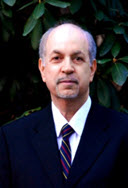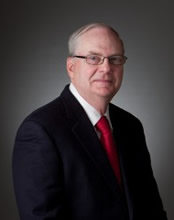As we all know, public transportation is a fiercely competitive business, even in operating environments which are subsidized. But the failure to make tiny investments in safety can be costly in the courtroom.
Mill Wise and Gram Foolish
With a cartridge she likely failed to fill the night before, or perhaps engorging too much cheesecake for breakfast, an elderly diabetic boarded a motorcoach for her 1200-mile overnighter while stowing her insulin in the luggage bays. While her son had more opportunities to request its retrieval than he exercised, no driver fully accommodated those he made, and his mother progressed from insulin shock to a flailing, window-bashing heart attack. At one rest stop, when her son had difficulty identifying the appropriate luggage, he was told to hurry up." This admonition cost the operating company 60% of a $400,000 judgment.
As I walked into the office of an attorney whose client had been practically beheaded by the exterior, side-view mirror of an activity bus which had rolled down a hill, in the process paralyzing a second student it ran over, I noticed an aluminum wheel chock lying next to his desk. He grinned as he showed me the receipt documenting the barely $20 he paid for it, retail. This case settled out against the operator and vehicle manufacturer for a combined $7.5 million.
After leaving the restroom while her coach was decelerating off a freeway ramp, an elderly woman spilled down the aisle, breaking her leg and smashing her head. This case settled out handsomely because, among other omissions, the operator had failed to purchase or retrofit the seatbacks with grab handles. Had this case proceeded to trial, the victim's attorney had estimates of these upgrades" handy.
Before receiving large settlement checks, numerous attorneys I assisted in crossing cases involving unmarked intersections were prepared to emulate Tom Sawyer by conducting opening and closing arguments while holding a quart of white paint and gesticulating their points with a cheap paint brush.
In numerous transit cases, drivers have discharged passengers on the wrong side of the intersection to avoid an extra light cycle, shaving a precious 30 seconds or so from the run -- only to deposit the passengers into potholes, onto cracked curbing or, in one case, into a batch of freshly-poured cement. The few seconds saved generally cost the defendants hundreds of thousands of dollars.
In one paratransit case where the operating company was compensated on a per-mile basis, his drivers saved precious minutes by leaving wheelchair securement devices and retractors in the floor tracks. When an overweight, visually-impaired, cognitively-impaired, diabetic adult tripped over one of them, and was transformed instantly into a quadriplegic, the defendant shelled out $1.5M.
After several schoolchildren were dragged down the street and whipped beneath the rear tires when the knots at the end of their windbreakers' drawstrings were caught in the doors of their schoolbuses (and their drivers failed to clear the mirrors" before pulling out), the industry-wide retrofit for this problem became a pocket-sized, rubber wedge costing roughly a dollar. But it took several multi-million dollar settlements to trigger this fix.
Several molestation cases where passengers were assaulted on the seat directly behind the driver might have been averted by the mounting of an oversized, convex mirror on the header. These devices cost less than the dinners I enjoyed at the conferences where I discovered them. The labyrinthine defense efforts in some of these cases cost more than the settlements.
An elderly wheelchair occupant was thrown into the windshield when his chair pivoted around its single-point, Rube Goldberg securement restraint as the vehicle braked at the bottom of a steep hill. This attempt to save a few seconds during every wheelchair securement episode, and a few dollars in hardware, cost the defendant hundreds of thousands.
A transit vehicle full of barricades and modesty panels failed to have one installed between the side-facing seat bench behind the driver and the forward-facing seat directly behind it. An elderly woman not afforded priority treatment, and who chose the aisle-side seat directly behind the section otherwise designated for her, flew into the farebox like a wounded pterodactyl when her driver stopped short after an automobile cut him off.
Enriching the Piper
When a transportation operator kills or maims a passenger because a few dollars were saved in service or equipment, arguments about the competitive nature of the business generally fall upon deaf ears. When a passenger suffers because the operator actually spent more than was needed, but on a frill, even more severe verdicts or settlements may ensue:
When a colleague began boarding a motorcoach, his friend turned around and promptly walked into the exterior, side-view mirror he neither looked for nor saw. The exotic, European mirror was regularly tucked in for bus-washing purposes. But it was not tucked in to protect passengers during its hour-long layover. This irony (and other defense blunders) frightened the coach manufacturer into a $330,000 settlement. The operating contractor turned over $950,000.
An 18-month-old infant waiting in a shelter was startled out of her stroller and into the gutter, and crushed by the bus' rear tire, when a transit bus suddenly pulled out, its rear engine roaring past her. The driver, who had met the victim and mother only moments before, could not see them waiting at the curb because his view through the curb-side, exterior mirror was blocked by an advertising placard pasted onto the forward side of the shelter. Now missing half her buttocks, this victim received a sizeable settlement.
In a society with no universal healthcare, little accountability, marginal recourse, and income disparities which often transform injuries into an extended family's complete ruin, victims and their attorneys have little practical choice but to chase the rainbows suddenly available to them when an injury or fatality occurs.
Saucers and Sorcery
When a jury of one's peers is asked to assess transportation safety, the defendant's plate better not be missing a handful of magic beans. The general principle in transportation liability is that, within reason, safety should not be party to a trade-off for performance, durability, maneuverability, versatility, fuel efficiency or any other criteria by which vehicles and service are often evaluated. Safety better not appear as a trade-off for marginal, much less trivial, cost savings. And God help the defendant found trading safety for comfort or style.
In a society where the judicial system represents the last bastion of hope for most individuals using public transportation, one can expect the scales of justice to balance, if not tip, when opportunities arise to weigh the evidence. When the key evidence can be carried into court with one hand, or cost less than a single juror is being paid for his or her time in court, one should not be surprised when the other hand is filled with gold.
Ned Einstein is the President of Transportation Alternatives, a passenger transportation and automotive consortium engaged in consulting and forensic accident investigation and analysis (more than 600 cases). Specializes in elderly, disabled, schoolchildren. Mr. Einstein has been qualified as an Expert Witness in accident analysis, testimony and mediation in vehicle and pedestrian accidents involving transit, paratransit, schoolbus, motorcoach, special education, non-emergency medical transportation, taxi, shuttle, child transport systems and services...
©Copyright - All Rights Reserved
DO NOT REPRODUCE WITHOUT WRITTEN PERMISSION BY AUTHOR.










